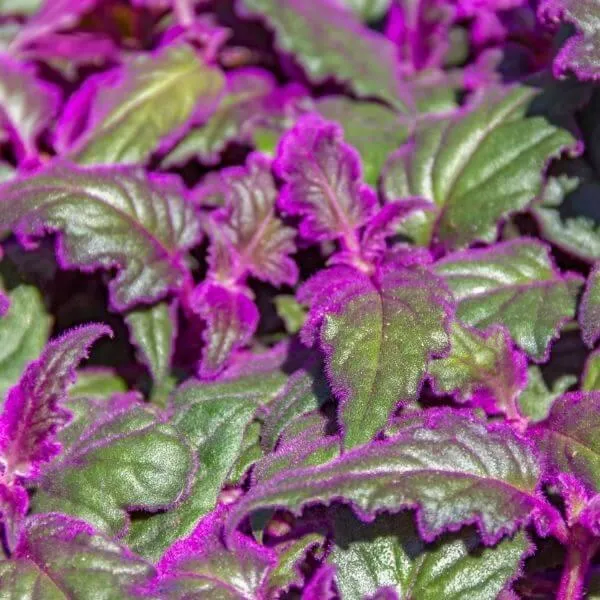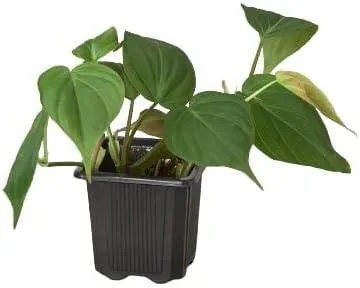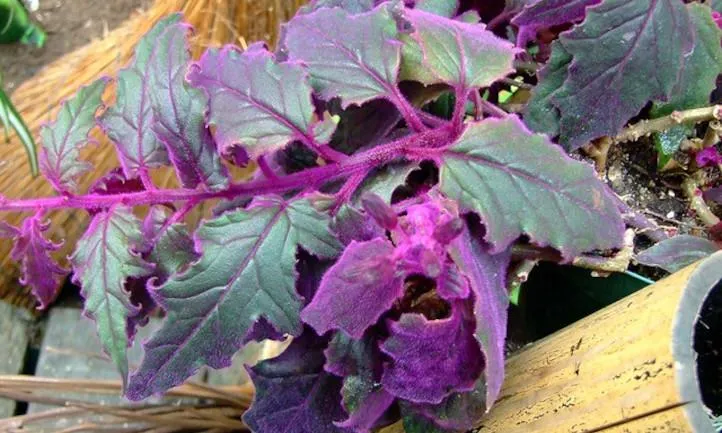Everything You Need to Know About Velvet Plants
Velvet plants, or velvetleaf plants, refer to any plant species within the genus Petersonia. These beautiful plants are prized for their velvety or velour-like leaves. In this article, I will answer common questions people have when searching for information on velvet plants.
What Are the Different Types of Velvet Plants?
There are many varieties of velvet plants cultivated as houseplants or garden plants. Some of the most popular types include:
- Velvet Plant (Gynura aurantiaca) – One of the most common varieties, known for its deep green,fuzzy leaves that may be purple or reddish on new growth.
- Purple Velvet Plant (Gynura divaricata) – Similar to regular velvet plant but with more vivid purple leaves.
- Dwarf Red Velvet Plant (Acylphyx fruticosa) – A compact succulent plant with rounded, burgundy leaves.
- Philodendron selloum – Often mistakenly called velvet plant. Has thick, dark green leaves that are fuzzy/hairy rather than truly velvety.
There are over 20 species of velvet plants available, so plant enthusiasts have many options to choose from based on preferred leaf color and size.
What Care Do Velvet Plants Require?
Velvet plants are very low maintenance as long as a few basic care tips are followed:
- Place in bright, indirect sunlight. Too much direct sun can scorch the fuzzy leaves.
- Water when the top inch of soil is dry. Allow soil to dry slightly between waterings.
- Mist leaves occasionally to keep them looking their fullest.
- Feed monthly in spring and summer with a balanced houseplant fertilizer.
- Repot every 2 years or when rootbound in larger containers.
- Prune off any wilted or damaged leaves to promote new growth.
From my experience, velvet plants are very forgiving as long as they receive adequate light. They don’t need perfect growing conditions to thrive.
How Do I Propagate Velvet Plants?
There are a few different propagation methods for velvet plants:

- Stem cuttings – Take 4-6 inch cuttings in spring, remove lower leaves, and root in water or moist soil.
- Leaf cuttings – Remove leaves, lay on soil and mist. New plants should sprout from the petiole (leaf stem).
- Division – In spring or fall, divide overgrown clumps into smaller plants with 3-5 leaves each and repot.
Propagation allows you to expand your plant collection at no cost. I usually start with stem cuttings and have about an 80% success rate.
How Do I Care For Velvet Plants Indoors?
As velvet plants originated in tropical forests, they do best indoors as houseplants where the temperature and humidity stay higher:
- Place in a bright spot with indirect sunlight from an east or west-facing window.
- Maintain indoor temperatures between 65-80°F year-round.
- Water when top inch of soil is slightly dry and use lukewarm water.
- Mist leaves frequently to up the humidity around the plant.
- Repot in spring every 2-3 years using a well-draining potting mix.
- Fertilize monthly in growing season with a diluted liquid houseplant food.
With the right care, velvet plants can last for years indoors. I’ve had some monster-sized ones living for nearly a decade!
Can I Grow Velvet Plants Outdoors?
While velvet plants originated in tropical areas, some gardeners have success growing them outdoors in zones 9-11:
- Provide partial shade from harsh morning or afternoon sun.
- Acclimate plants slowly to outdoor light if grown indoors previously.
- Keep soil consistently moist but not soggy during growing season.
- Mulch to retain moisture and provide winter frost protection in colder zones.
- Move potted plants indoors before nighttime temps drop below 50°F.
- In zones 10-11, velvet plants can be grown as perennials in filtered shade.
As with any tropical, it’s kind of iffy in colder zones. I’d start with a trial plant rather than going all in!
What Pests Attack Velvet Plants?
A few common velvet plant pests include:

- Spider mites – Tiny spider-like bugs that cause leaves to appear dusty or yellowish and eventually drop off.
- Mealybugs – Fluffy white insects that secrete honeydew and weaken plants. Check under leaves.
- Scale – Hard, dome-shaped insects attached firmly to leaves and stems. Scrape off with alcohol-soaked cotton ball.
To avoid pests, inspect new plants carefully, prune away damaged growth, and spray leaves periodically with neem oil as prevention. For more stubborn infestations, use insecticidal soap as directed on the label.
Any Tips For Stunning Displays?
Here are some ideas for really showing off your velvet plants:
- Group several pots of different varieties together for a dramatic leaf display.
- Combine purple or burgundy velvet plants with pale pink or white blooming plants.
- Trail velvet vines over the sides of hanging baskets for a lush, lush look.
- Use vividly foliaged velvets as a focal point amid neutral green plants.
- Arrange pots nestled in a bed of mulch for a lush tropical oasis vibe.
Velvet plants have such moody foliage, you can’t go wrong letting their leaves take center stage. They’ll basically steal the whole show, basically!
Any Final Care Tips?
In summary, here are a few more tips for happy, healthy velvet plants:
- Check soil moisture frequently and water thoroughly when dry.
- Rotate plants occasionally for even growth and to prevent leaning.
- Pinch stems when young to encourage bushiness rather than lanky growth.
- Wipe dust from leaves periodically with a damp cloth to maintain lush texture.
- Prune off flowers as plants will put energy into shoots rather than blooms.
With the right conditions, velvet plants can thrive for years. Their furry foliage never ceases to intrigue me! I hope these answers give you a solid base for caring for your own velvet plants. Let me know if any other questions come up.
Facts About Velvet Plants
| Plant | Light Needs | Water Needs | Temperature | Flower Color |
|---|---|---|---|---|
| Velvet plant | Medium to bright light | Allow soil to dry slightly between waterings | 65-75°F | Purple, red, pink, white |
| Chinese evergreen | Medium light | Water when top inch of soil is dry | 60-75°F | White, pink |
| Peperomia | Bright indirect light | Water when top inch of soil is dry | 65-80°F | Green/red variegated leaves |
| Fittonia | Bright indirect light | Keep soil slightly moist | 65-75°F | White, pink, red veining |
FAQ
-
What kind of soil do velvet plants like?
Velvet plants typically favor soil that drains well, such as a potting mix. They do not want soggy soil.

-
How much sunlight do velvet plants need?
Most velvet plant varieties need lots of bright, direct sunlight. At least six hours of sunlight daily suits them. However, they can adjust to partial shade if the soil is kept moist.
-
How often should I water velvet plants?
Velvet plants should be kept moderately moist but not soggy. Water when the top inch or two of soil becomes dry. In the summer, you may need to water every 5-7 days. In winter when growth slows, every 10-14 days is fine. Excess water can harm them.
-
How do I care for a velvet plant indoors over winter?
Basically, bring your velvet plant indoors before temps drop below 50 degrees. Place in a spot with bright light but not direct sun, which can burn the leaves. Cut back on watering but don’t totally dry out the soil. Kind of amazing these tropical beauties can survive a fridge winter!
-
Do velvet plants need fertilizer?
You do not have to fertilize velvet plants often, if at all. Perhaps once during the spring and summer growing seasons is enough. Overfertilizing can damage the leaves. A balanced houseplant food every few months seems to work for many folks. But who knows, our plants certainly keep us guessing at times!
-
When does a velvet plant flower?
Most velvet plant varieties bloom in late winter through early spring. You might notice flower spikes forming any time the plant receives at least 12 hours of complete darkness per night. The blooms can last for weeks and really make a statement. But sometimes our velvet plants just want to be low maintenance, leafy friends without all that floral drama.
-
Are there any pests that bother velvet plants?
Mealybugs and spider mites occasionally cause issues. Look for tiny cotton-like spots or web-like marks on leaves. Isolate and remove infected foliage. Spray with insecticidal soap or neem oil. But please, no terrifying bugs—I don’t need memories from my one spider plant triggering nightmares!

In summary, velvet plants are low maintenance as houseplants go. With the right conditions like drainage, light and occasional fertilizer they grow beautifully. Their fuzzy green or purple leaves conjure many fond memories of tropical jungles from my childhood travels, real or imagined. But as always, your milage may vary with these fickle-but-friendly plants. Experiment and see what treatment yours prefers!
